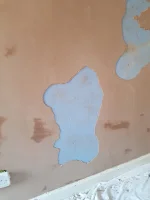You have reached the maximum number of views available on this site without registering.
You are using an out of date browser. It may not display this or other websites correctly.
You should upgrade or use an alternative browser.
You should upgrade or use an alternative browser.
Domestic dilemma
- Thread starter Ralphyboy
- Start date
smoother09
Well-Known Member
You have reached the maximum number of views available on this site without registering.
S a plastering
Well-Known Member
You have reached the maximum number of views available on this site without registering.
D
Deleted member 32554
Guest
You have reached the maximum number of views available on this site without registering.
S a plastering
Well-Known Member
You have reached the maximum number of views available on this site without registering.
Stevieo
Royal Spin Doctor
You have reached the maximum number of views available on this site without registering.
You have reached the maximum number of views available on this site without registering.
smoother09
Well-Known Member
You have reached the maximum number of views available on this site without registering.
Stewie03
Well-Known Member
You have reached the maximum number of views available on this site without registering.
Complete
Well-Known Member
You have reached the maximum number of views available on this site without registering.
You have reached the maximum number of views available on this site without registering.
Hillsy
Member
You have reached the maximum number of views available on this site without registering.
Tinytom
Well-Known Member
You have reached the maximum number of views available on this site without registering.
The Hobo
Well-Known Member
You have reached the maximum number of views available on this site without registering.
S a plastering
Well-Known Member
You have reached the maximum number of views available on this site without registering.
S a plastering
Well-Known Member
You have reached the maximum number of views available on this site without registering.
You have reached the maximum number of views available on this site without registering.
Retired Spread
Well-Known Member
You have reached the maximum number of views available on this site without registering.
Wayners
Well-Known Member
You have reached the maximum number of views available on this site without registering.
You have reached the maximum number of views available on this site without registering.
Wayners
Well-Known Member
You have reached the maximum number of views available on this site without registering.
Similar threads
- Replies
- 6
- Views
- 884
- Replies
- 17
- Views
- 2K
- Replies
- 10
- Views
- 1K


